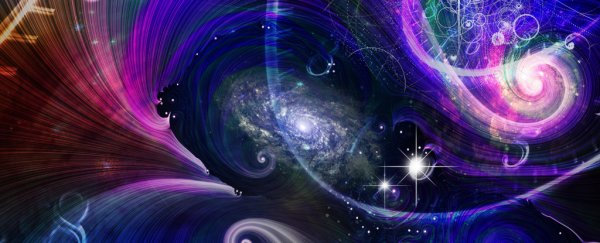When it comes to physics, there are some pretty complicated ideas out there, but one of the most confusing is string theory, which involves the existence of extra dimensions, tiny strings within atoms and, well, a whole lot else we don't really understand. But in this 2005 TED talk, theoretical physicist Brian Greene, author of New York Times bestsellers The Fabric of the Cosmos and The Hidden Reality, explains the basics. And to date it's still the best explanation we've ever seen.
In addition to his work as a science communicator, Greene is also a researcher at Cornell University in the US, where he works on superstring theory, which is an attempt to come up with a theory for everything to explain how all the particles and forces in the Universe work. Importantly, superstring theory tries to explain why all the conditions in the Universe are finely tuned to support life.
So what does it all mean? As you might expect, Greene does a much better job of breaking it down than we can, so you should really watch the video above. But if you're looking or the ELI5 version, we can help you out with that.
Basically, superstring theory is an attempt to figure out what the smallest, most indivisible, fundamental constituents of the Universe are. Take an object like a candle, for example. We all know that if you look closely enough, that candle is made up of atoms. And the atoms are made up of electrons, protons, and neutrons. If you get even further down, protons and neutrons are made up of quarks. And that's where conventional ideas end.
But, according to string theory, there's actually something even smaller inside the quarks, and these are dancing filaments of energy that look a lot like beautiful vibrating strings – hence the name string theory. According to the idea of string theory, these cosmic strings vibrate in different patterns to make up all the different types of particles that form the world around us.
And that's where the theory of everything comes into it, because if string theory is correct, then everything in the Universe is controlled and composed of these tiny cosmic strings, and if we can understand them, then we could understand the fundamental rules that govern nature.
Unfortunately it's not that simple, because for this theory to pan out mathematically, we can't just have three dimensions of space in the Universe. We actually need 10 dimensions of space, and one dimension of time.
Watch the video above to find out why that makes more sense than you might think and how physicists are now actively seeking out these extra dimensions. We promise that by the end of it you'll actually be able to explain string theory to your friends at your next dinner party.
But there is one quick update we need to make – obviously this was filmed while the Large Hadron Collider was still being built at CERN in Switzerland, and as yet, the machine hasn't been able to confirm the existence of these extra dimensions.
However, now that it's running at record-breaking new energy levels, and with China announcing they're going to be buliding a particle accelerator twice the size in the coming years, we're closer than ever to being able to actually test string theory. And that's really, really exciting.
Brian Greene is doing his first Australian tour in March 2016 and ScienceAlert is a promotional partner. Find out more.
